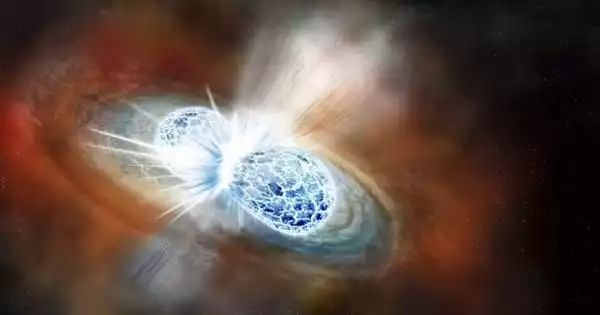Gamma rays contain the maximum energy in the electromagnetic spectrum because they have the shortest wavelengths (approximately 0.1 angstrom or less). Because gamma rays are so powerful, they can flow right through the mirror of a normal optical telescope. Gamma rays are instead detected by the visual flashes they create when reacting with a material in a specially built equipment, such as a scintillation detector. Because the Earth’s atmosphere shields the majority of gamma rays, most gamma-ray telescopes are carried on satellites and balloons.
According to new research, telescopes that observe the universe in the most intense form of light may aid scientists in detecting the “fingerprints” of gravitational waves.
Gravitational waves are created when enormous objects collide, causing ripples in space-time that wash over Earth. Although existing gravitational wave observatories, like as the Laser Interferometer Gravitational-Wave Observatory (LIGO) and the Virgo interferometer, can detect the violent collisions that produce gravitational waves, they can only view one of those events at a time, which can be months apart.
We’ve been surprised at how good it is at finding the types of pulsars we need to look for these gravitational waves — over 100 so far! Telescopes that observe the universe in the most intense form of light may aid scientists in detecting the “fingerprints” of gravitational waves.
Matthew Kerr
However, there may be another way to detect gravitational waves: by searching for their signatures in pulsars, which are rapidly spinning neutron stars that pulsate at regular intervals. In a new study, researchers believe they have illuminated the route toward that aim, owing to observations from NASA’s Fermi Gamma-ray Space Telescope, which monitors the universe in gamma-rays, the most intense form of light.
“We’ve been surprised at how good it is at finding the types of pulsars we need to look for these gravitational waves — over 100 so far!” study co-leader Matthew Kerr, a physicist at the U.S. Naval Research Laboratory, said in a statement.
The majority of gamma-rays from space are absorbed by the Earth’s atmosphere. As a result, gamma-ray astronomy could not progress until our detectors could be lifted above all or most of the atmosphere using balloons or spacecraft. In 1961, the Explorer 11 satellite carried the first gamma-ray telescope into orbit, which detected less than 100 cosmic gamma-ray photons. These looked to emanate from everywhere in the Universe, assuming a homogeneous “gamma-ray backdrop.” A background like this would be predicted from the interaction of cosmic rays (very powerful charged particles in space) with gas found between stars.

Pulsars revolve at incredibly exact intervals, which scientists can track from Earth using the beams emitted by pulsars. As gravity waves wash over pulsars, they may gently alter their timing, and astrophysicists believe they may detect those minute changes and thereby track the gravitational waves that caused them.
Astronomers have traditionally discovered pulsars by scanning the sky using radio telescopes for radio waves. However, the gas and dust that make up the universe are not friendly to radio waves, and many of them are absorbed en route.
Gamma-rays, on the other hand, have the maximum energy of any wave on the electromagnetic spectrum, which means they will pass through. However, until now, astrophysicists have never utilized gamma-rays to track pulsars. The findings could point to a new, more powerful means of detecting pulsars and, by extension, gravitational waves, with researchers hoping that further advancements would make these detection methods even more sensitive.
In 1961, the first gamma-ray telescope was carried aboard the American spacecraft Explorer 11. The Vela defense satellites, which were meant to detect gamma rays from covert nuclear testing, discovered unexplained gamma-ray bursts emanating from deep space in the 1960s. In the 1970s, Earth-orbiting observatories discovered a number of gamma-ray point sources, including Geminga, a particularly powerful one that was eventually recognized as a nearby pulsar.
Launched in 1991, the Compton Gamma Ray Observatory mapped thousands of astronomical gamma-ray sources. It also revealed that the mystery bursts are spread throughout the sky, hinting that their origins are in the furthest reaches of the universe rather than in the Milky Way. The Fermi Gamma-ray Space Telescope, which was launched in 2008, detected pulsars that solely released gamma rays.
Swift is presently working with the Fermi Gamma-Ray Space Telescope, which was launched in 2008, to continue studying the universe in the gamma-ray band. Fermi, formerly known as GLAST (Gamma-ray Large Area Space Telescope), analyzes GRBs as well as blazars, neutron stars, gamma-ray background radiation, supernova remnants, dark matter, and other phenomena.





